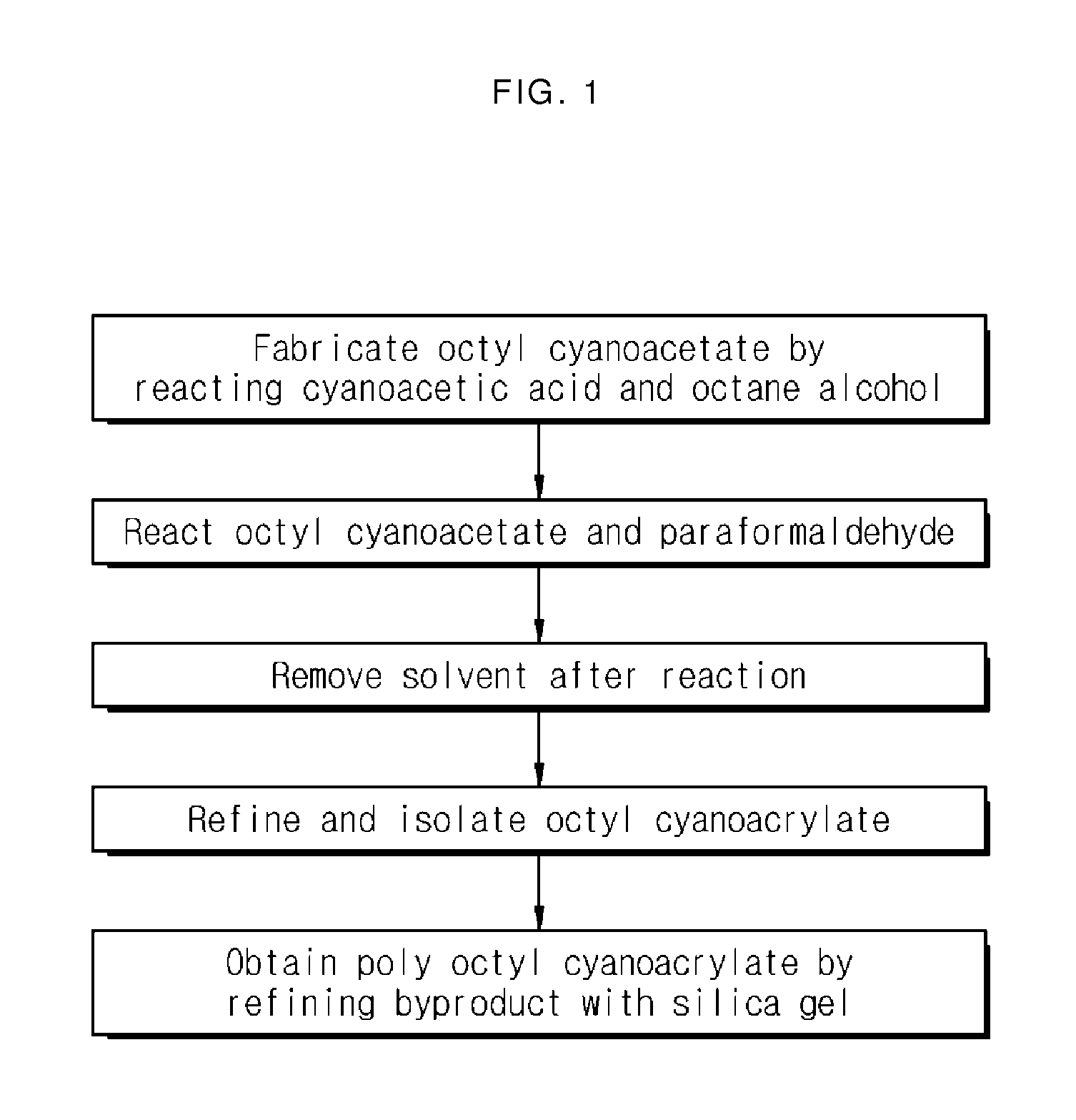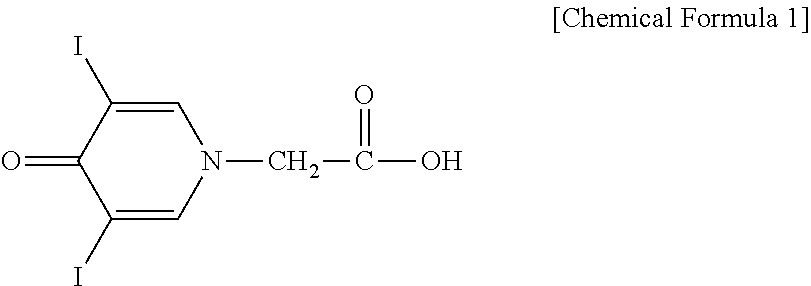Cyanoacrylate-based bio-adhesive composition
a bioadhesive and cyanoacrylate technology, applied in the field of cyanoacrylate-based bioadhesive compositions, can solve the problems of limited materials used for tissue adhesives, virus infection, difficulty in obtaining sufficient adhesive strength of tissue adhesives, etc., and achieve excellent antibacterial effect and enhanced biodegradability
- Summary
- Abstract
- Description
- Claims
- Application Information
AI Technical Summary
Benefits of technology
Problems solved by technology
Method used
Image
Examples
embodiment 1
] Manufacture of Octyl Cyanoacetate and Poly Octyl Cyanoacetate
[0028]A 3.5 L mixture in which cyanoacetic acid and octane alcohol were mixed at an equivalence ratio of 1:1 was put in a glass flask and then 3.5 L toluene was added as a solvent to react. After a reaction was completed, toluene was removed and octyl cyanoacetate was isolated and refined. At this time, the reaction yield was 80% or more.
[0029]A 3.5 L mixture in which the above octyl cyanoacetate and paraformaldehyde were mixed at an equivalence ratio of 1:1 was put in a glass flask and then 3.5 L toluene and base catalyst were added to react. After a reaction was completed, toluene was removed and octyl cyanoacrylate was isolated and refined. From a byproduct left after the octyl cyanoacrylate was refined, poly octyl cyanoacrylate was obtained and refined using a silica gel column. At this time, the yield of poly octyl cyanoacrylate was 80%.
embodiment 2
[Embodiment 2] Manufacture of Bio-Adhesive Composition
[0030]By mixing the octyl cyanoacrylate of 95 weight % and the poly octyl cyanoacrylate of 1.5 weight % obtained in the above embodiment 1 together with 3,5-diiodo-4-pyridone-1-acetic acid of 0.8 weight %, methoxy hydroquinone of 0.3 weight %, sulphur dioxide of 1.2 weight % and benzalkonium chloride of 1.2 weight %, a bio-adhesive composition was manufactured.
experimental example 1
Property Test of Bio-Adhesive Composition
[0031]Properties of the bio-adhesive composition manufactured in the above embodiment 2 were measured by means of the following methods. Table 1 below shows the results.
[0032]
[0033]According to ASTM D1002 method using a tensile strength tester (Instron Inc.-4204), about 0.03 mL of the bio-adhesive in the embodiment 2 was adhered to a stainless steel with adhesion area 1 cm2 and then an adhesive strength was measured after 24 hours had elapsed at a temperature of 37° C. and a relative humidity of 75% [adhesive strength=adhesive strength between metals (stainless steel)].
[0034]
[0035]According to ASTM D3111method using a hardness tester D-type (Teclock Inc.-GS 709N), the bio-adhesive in the embodiment 2 was poured into a molder and cured for 72 hours at a temperature of 37° C. and a relative humidity of 75%. Then, the flexibility of a resultant sample with 2cm width and 5mm thickness was measured under a load of 5 kgf.
[0036]
[0037]According to AS...
PUM
| Property | Measurement | Unit |
|---|---|---|
| Fraction | aaaaa | aaaaa |
| Fraction | aaaaa | aaaaa |
| Fraction | aaaaa | aaaaa |
Abstract
Description
Claims
Application Information
 Login to View More
Login to View More - R&D
- Intellectual Property
- Life Sciences
- Materials
- Tech Scout
- Unparalleled Data Quality
- Higher Quality Content
- 60% Fewer Hallucinations
Browse by: Latest US Patents, China's latest patents, Technical Efficacy Thesaurus, Application Domain, Technology Topic, Popular Technical Reports.
© 2025 PatSnap. All rights reserved.Legal|Privacy policy|Modern Slavery Act Transparency Statement|Sitemap|About US| Contact US: help@patsnap.com


